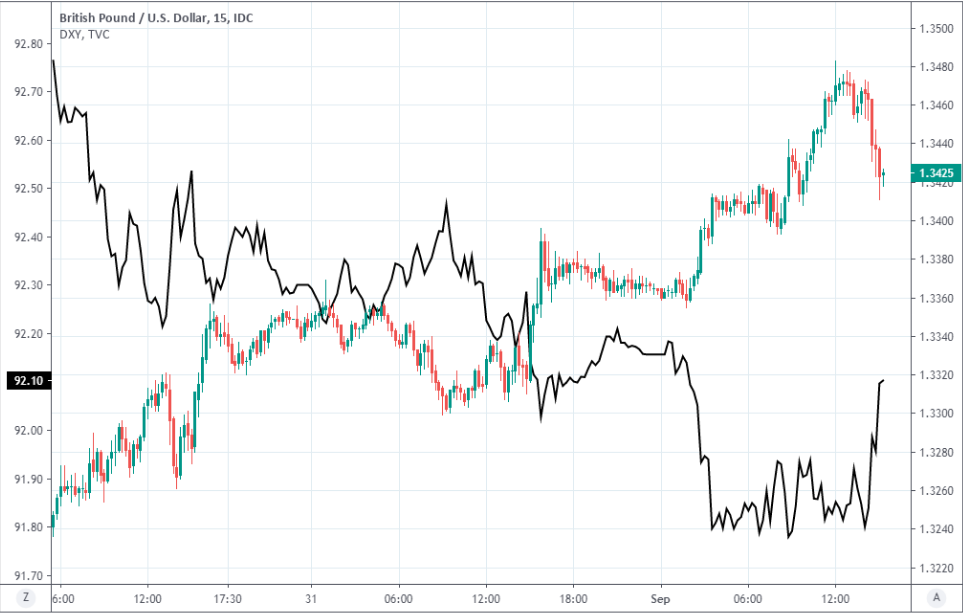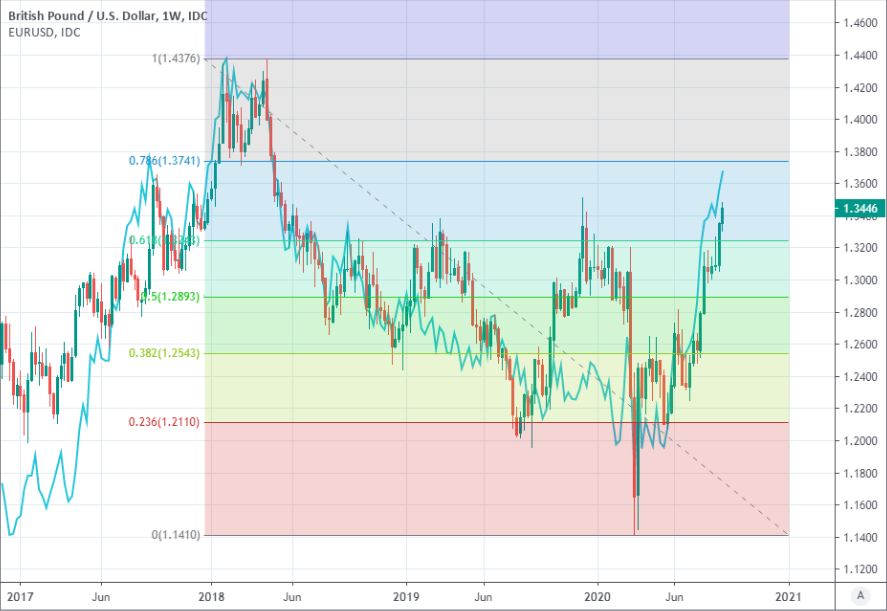Pound-Dollar Rate Dips from 2020 Highs after U.S. Manufacturing PMI Beats Expectations
- Written by: James Skinner
-

Image © Adobe Images
- GBP/USD spot rate at time of writing: 1.3459
- Bank transfer rate (indicative guide): 1.3088-1.3182
- FX specialist providers (indicative guide): 1.3257-1.3338
- More information on FX specialist rates here
The Pound-to-Dollar exchange rate dipped back from fresh 2020 highs Tuesday while the Dollar Index bounced after the Institute for Supply Management (ISM) Manufacturing PMI surprised on the upside for August, although Sterling is at high altitude and technical analysts are warning of resistance on the path ahead.
August's reading of the ISM Manufacturing PMI came in at 56 on Tuesday, up from 54.2 in July and ahead of the consensus for a more modest increase to only 54.6 for the recent month, which vindicates other surveys for having indicated that America's manufacturing recovery endured through August.
"The survey still suggests that manufacturing in the US is rebounding a little quicker post-lockdown than we had initially expected," says Andrew Grantham, an economist at CIBC Capital Markets.
New manufacturing orders rose more than six percent while order backlogs continued to build alongside a tepid recovery in employment and overall production from the U.S. industrial sector in August, the first full month in which the economy was fully reopened.
Growth in new orders was driven by a pick-up in both domestic as well as export customer demand, which bodes well for the U.S. economy heading into the end of the third-quarter, although Thursday's ISM services index is arguably more significant for the outlook as well as the Dollar.
Above: Pound-to-Dollar rate shown at 15-minute intervals alongside Dollar Index (black line, left axis).
PMI surveys measure changes in industry activity by asking respondents to rate conditions for employment, production, new orders, prices, deliveries and inventories. A number above the 50.0 level indicates industry expansion while a number below is consistent with contraction. The survey results often correlate with official measures of output, although they can often be wide of the mark too.
"The one tricky bit with the PMIs: high readings can inappropriately conflate the number of businesses reporting growth with the rate of growth. High readings don't necessarily indicate that output growth is back above pre-COVID observations," says Stephen Gallo, European head of FX strategy at BMO Capital Markets. "UK mortgage and consumer credit data for the month of July confirmed the Q3 snapback in activity from the 20% QoQ GDP plunge in Q2. Following four straight months of contraction, net consumer credit increased £1.2 billion (+£0.8 billion exp.) and 66K new mortgage loans were approved. GBPUSD strength fed on the economic data. But the pair would have probably continued to rally regardless thanks to the dollar move."
The Pound-to-Dollar rate was already paring gains before the ISM PMI was released but continued lower from fresh 2020 highs in the wake of it before stabilising just above the 1.34 handle. Sterling has the wind in its sails since surging above the 1.33 handle Friday but technical analysts are warning that it faces obstacles on the path ahead.
"GBP/USD is heading towards the 1.3500/15 the December 2019 high and the January 2009 low. Here we also find the 1.3522 2009-2020 resistance line (see the monthly chart) and we would allow for this to hold the initial test," says Karen Jones, head of technical analysis for currencies, commodities and bonds at Commerzbank. "The US Dollar [Index] is under pressure but with a 13 count on the daily chart and TD support at 91.55 (Fibo support at 91.40) caution is warranted. Tighten stops on short positions."
Above: Pound-to-Dollar rate shown at daily intervals alongside Dollar Index (black line, left axis).
The Pound has risen to its highest level against the Dollar since the immediate aftermath of the December 2019 election and could yet rise further still, although Commerzbank's Jones expects that Sterling will struggle once it gets to 1.3522. She told clients on Tuesday to bet against the Pound-to-Dollar rate at 1.3490 and to add to the position if Sterling reaches 1.3515, although she and the Commerzbank team will walk away from the trade if GBP/USD hits 1.3535.
"Dollar weakness pushed cable higher once more. GBP/USD is filling bids in the 1.346 zone. We’ll be watching closely for the 2019 high at 1.3514. If breached, it could exert more downward pressure on EUR/GBP as stop-loss orders for sterling shorts are most likely to get triggered," says Mathias Van der Jeugt, head of research at KBC in Brussels.
Sterling outperformed Tuesday as the rout in U.S. exchange rates continued with a third day of unbroken losses for the greenback, which pushed the Dollar Index down to fresh two-year lows as the Euro-to-Dollar rate topped the 1.20 level for the first time since April 2018. EUR/USD gains came despite sharp falls in Eurozone inflation which, when combined with the 2020 Euro rally, could elicit a rhetorical intervention from the European Central Bank (ECB).
The Pound has overlooked reports suggesting the British government is planning to announce a series of tax increases as part of an effort to foot the bill for the coronavirus shutdown, in addition to further confirmation of a possibly intractable deadlock in the Brexit trade talks. But such is the market's increasing contempt for the Dollar, which has built further since the Federal Reserve (Fed) said last week that it will now covet above-target inflation pressures while leaving interest rates pinned to the floor as part of a new inflation targeting framework. This promises more declines for 'real' U.S. bond yields.
Above: GBP/USD at weekly intervals with Fibonacci retracements of 2018 downtrend, and EUR/USD (black line, left axis).








